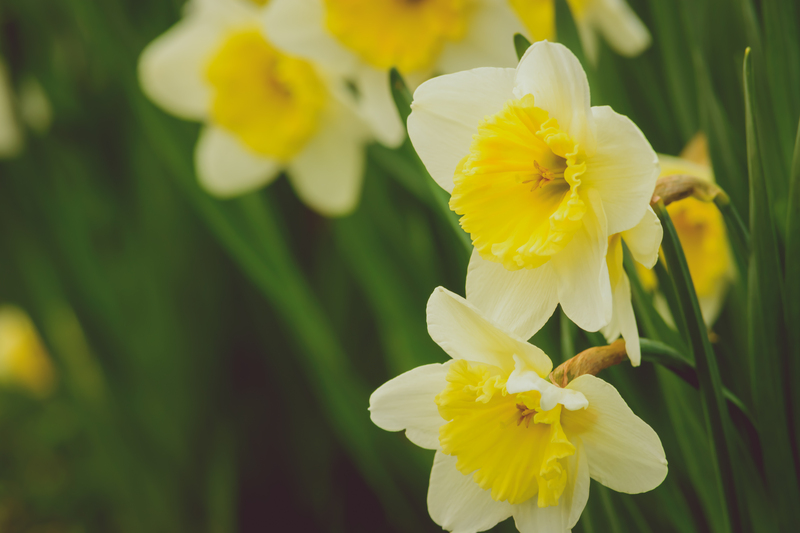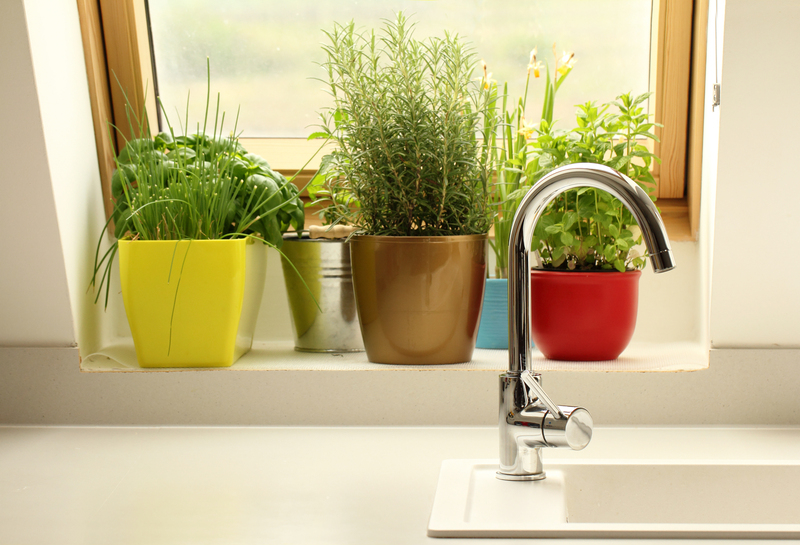Maximizing Joyful Gardening Amidst Canine Curiosity
Posted on 28/09/2025
Maximizing Joyful Gardening Amidst Canine Curiosity
Gardening is a source of happiness, tranquility, and boundless creativity. However, for dedicated pet owners, especially dog lovers, cultivating a lush, vibrant garden can become a playful challenge. If you find your furry friend sniffing, digging, or sometimes even nibbling in your beloved flower beds, you're not alone. Maximizing joyful gardening amidst canine curiosity is both an art and a science. This comprehensive guide is crafted for every dog owner who dreams of a flourishing garden and a happy pup coexisting harmoniously.
The Nature of Canine Curiosity in the Garden
Dogs possess an immense curiosity about their environment. Their keen senses constantly draw them to new sights and scents--making your garden a prime spot for exploration. Understanding the motivations behind their behavior is key to maximizing your gardening joy while keeping your dog safe and content.
- Olfactory Adventures: Your dog's sense of smell is up to 100,000 times stronger than yours. Flowerbeds, compost, and fresh soil become sensory playgrounds.
- Play Instincts: Chasing butterflies, digging in loose soil, and pouncing through foliage satisfies innate urges for play and exercise.
- Tasting and Chewing: Dogs often chew on plants out of curiosity or boredom, which can be dangerous if toxic plants are present.
Observing and Embracing Canine Garden Behavior
Before redefining your garden space, take time to observe your dog's behavior in the yard. Does your companion dig in specific spots, follow certain scents, or show particular interest in specific plants? By acknowledging your dog's patterns, you can tailor your gardening approach to align with their instincts, paving the way for a safer, happier, and more harmonious garden experience.

Design Principles for a Dog-Friendly Garden
A sustainable approach to happy gardening with curious dogs lies in adapting your landscape design. With thoughtful planning and creative solutions, it's possible to cultivate a garden where your plants flourish and your canine companion thrives.
1. Zoning Your Garden
- Active Zones: Designate play areas with sturdy grass or dog-friendly ground covers for running, digging, and games. These zones release energy and minimize damage to formal beds.
- Rest Zones: Include shaded nooks with comfy, weatherproof bedding for resting and supervising.
- Plant Zones: Use raised beds, containers, or low fencing to define plant areas, subtly guiding your dog's movement.
2. Pathways for Exploration
Dogs instinctively patrol boundaries and love following paths. Integrate defined pathways of soft mulch, pea gravel, or flagstone throughout your garden design. These not only add structure and beauty but also fulfill your canine's desire to explore, reducing unintentional trampling of garden beds.
3. Durable and Safe Plant Choices
- Choose Hardy Varieties: Select resilient plants that can handle occasional brushing, digging, or doggy traffic (e.g., lavender, rosemary, ornamental grasses).
- Avoid Toxic Plants: Stay clear of dangers like lilies, daffodils, foxglove, azaleas, and sago palms. Consult veterinarian-approved, non-toxic plant lists.
- Strategic Placement: Plant fragile or prized specimens inside barriers or taller containers.
4. Create "Digging Pits" and Distraction Zones
If your dog is a dedicated digger, redirect that curiosity!
- Set up dedicated sand or soil pits where digging is allowed and even encouraged. Bury toys or treats to stimulate their interest in these zones.
- Add sensory forms of enrichment, such as scent trails with dog-safe herbs like mint or basil.
Dog-Proofing and Maintaining Your Joyful Garden
Even with careful design, ongoing supervision and proactive maintenance are crucial for maximizing gardening joy alongside dog curiosity:
- Secure Boundaries: Use sturdy fences, decorative barriers, or natural hedges to keep dogs out of delicate areas.
- Mulch Safely: Avoid cocoa mulch (toxic to dogs) and opt for alternatives like wood chips, pine straw, or gravel.
- Protect Compost and Chemicals: Keep fertilizers, pesticides, and compost bins securely covered and out of reach to safeguard curious noses and paws.
- Consistent Supervision: When possible, supervise outdoor time to gently redirect any unwanted behavior--such as digging in the wrong spot--before it becomes a habit.
Maintenance Tips for Dog Owners
- Prompt Clean-Up: Regularly remove dog waste to protect plants and soil health.
- Rotate Toys: Keep your garden fresh and engaging by rotating your dog's outdoor toys and treats.
- Inspect Plants Frequently: Early detection of plant damage enables you to intervene before significant harm occurs.
- Hydration: Provide fresh water bowls in shady areas to prevent dogs from seeking moisture from hoses or fountains.
Promoting Mutual Enrichment: Games and Training in the Garden
Turn your garden into a space for bonding and enrichment! Joyful gardening with dogs rises to new heights when both human and canine benefit from the outdoor experience.
Engage in Interactive Play
- Fetch and Tug-of-War: Use durable toys in designated active zones to burn excess canine energy, so your pup is less inclined to pester your prized plants.
- Scent Games: Hide treats or toys within their digging pit or sensory zones to awaken natural foraging instincts.
- Agility Courses: Simple hurdles, weaving poles, or tunnels offer physical challenges and mental stimulation for dogs, making the garden irresistible for play (and less appealing for digging up flower beds!).
Reinforce Positive Behavior with Training
Set clear garden boundaries and reward compliance:
- Teach "Leave It" and "Stay" Commands: Use treats and positive reinforcement when your dog avoids restricted zones or stands back from delicate plants.
- Establish Routines: Walk your dog before gardening sessions to tire them out, reducing bursts of hyperactivity in the yard.
- Reward Success: Celebrate calm and respectful garden behavior with praise, treats, or extra playtime.
Seasonal Strategies: Adapting Your Garden Year-Round
Seasonal changes bring different challenges and opportunities for gardening joy with an inquisitive dog:
Spring and Summer
- Reinforce Borders: Spring growth often tempts dogs into previously empty beds; refresh or raise barriers as needed.
- Check for Pests and Mulch: Insects, slug pellets, and mulches can pose risks--opt for pet-safe options.
- Hydration and Shade: Ensure adequate shade and cool resting spots during hot days to prevent overheating during play.
Autumn and Winter
- Leaf Litter Management: Piles attract playful pups; limit accessibility or designate a "leaf pile play zone."
- Monitor for Toxic Plants and Mushrooms: Wet, cool conditions can foster hazardous fungi--conduct regular inspections.
- Paw Care: Protect against ice, salt, or mud build-up, and maintain clean paths for easy navigation.
Best Tools and Accessories for Dog-Loving Gardeners
The right tools can make all the difference as you pursue a dog-friendly, joyful garden:
- Sturdy, Raised Planters: Elevate delicate flowers and veggies out of your dog's reach.
- Decorative Fencing: Choose materials and designs that complement your landscape while providing functional barriers.
- Dog Water Fountains: Encourage hydration and add a calming feature to your garden atmosphere.
- Compost Bin Covers: Secure lids deter curious canines from rooting around for scraps.
- Paw Wash Stations: Set up rinse-off points to clean muddy paws before returning indoors, keeping both your home and garden tidy.
Common Pitfalls and How to Avoid Them
Even devoted gardeners and pet parents can overlook potential hazards. Avoid the most common issues by following these simple tips:
- Underestimating Plant Toxicity: Always verify the safety of new plants. When in doubt, err on the side of caution.
- Ignoring Behavioral Cues: If your dog is persistently interested in a certain area, investigate for appealing scents, pests, or hidden treats.
- Using Inappropriate Mulches or Chemicals: Read labels closely and select products specifically labeled as pet-safe.
- Neglecting Fence Maintenance: Regularly inspect barriers for gaps or wear that may enable adventurous escapes or garden raids.

Maximizing Mutual Benefits: The Joys of Gardening with Dogs
At its heart, maximizing joyful gardening amidst canine curiosity is about partnership. You and your dog can develop a deeper bond as you explore the outdoors together, learning, adapting, and growing in your shared environment. Here's why the effort is so rewarding:
- Enhanced Personal Well-being: Gardening and time with pets are both proven to reduce stress and boost happiness, combining for a unique form of therapy.
- Physical Health: Regular gardening and outdoor play with your dog encourage consistent movement and fresh air for both of you.
- Mental Stimulation: Problem-solving, training, and observing animal behaviors provide endless cognitive engagement.
- Safe, Enriching Environments: You'll foster a backyard that's thriving, beautiful, and safe for every family member--four-legged or two-legged alike!
Conclusion: Embrace the Adventure of Canine-Assisted Gardening
To sum up, creating a flourishing, joyful garden in the presence of a curious dog is not only possible--it's profoundly rewarding. By prioritizing safe plants, thoughtful design, and interactive routines, you nurture both your garden and the special bond with your canine companion. Allow curiosity--yours as a gardener and your dog's as an explorer--to drive creative solutions and ongoing joy in your outdoor life. Every dig, sniff, and wag can become a cherished part of the adventure, making every bloom even more meaningful.
Happy gardening, and here's to blooming friendships amidst wagging tails!

